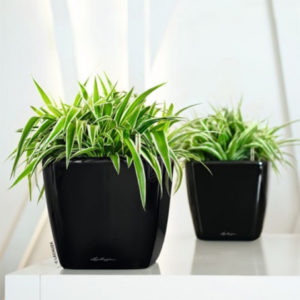Light: Undemanding. Spider plants prefer bright light, and tend toward scorching in direct sunlight. However, they will grow in conditions ranging from semi-shady to partial direct sun.
Water: Water liberally through the summer. Mist occasionally. During winter, cut watering back.
Temperature: Do not let fall below 10 degree Celcius or expose to cold drafts.
Soil: Spider plants like fast-draining, well-aeratedpotting mix.
Fertilizer: Feed weekly during the summer with liquid fertilizer or use pellets at the beginning of the growing season.
Category: Plants Options
Related products
-
 Quick view
Quick viewCordyline fruticosa
Soil: Rich, organic soil that doesn't dry out too much. Light: Good light will enhance colors. Situate indoor containers in an area that receives bright, indirect light. Fertilizer: Grow the Cordyline fruticosa in a draining container that is one time larger than its root ball. Fill the container with a well-drained potting mix amended with a slow-release fertilizer. Follow package instructions concerning fertilizer amounts. Water: Water the container regularly to keep the soil moist but not soggy. Water until it runs from the container's bottom drain holes. Humidity: Fill a plastic spray bottle with water and mist indoor-grown Cordyline fruticosa plants weekly to create humidity.Read more -
 Quick view
Quick viewDracaena ‘Lemon Lime’
Temperature: Keep in a warm room preferably where the dracaena can get consistent direct sunlight. Water: Water only when the top inch of the soil is dry to avoid over watering as it may lead to root rot. Fertilizer: Use soluble/liquid fertilizer especially when growing( sprouting new foliage)Read more -
 Quick view
Quick viewSansevieria Laurentil
Light: Although they are very forgiving, the sansevieria prefers bright light with some sun. They can adapt to full sun. Water: Let the soil dry between waterings. During winter, reduce watering to monthly, or whenever the soil is dry to the touch. Err on the side of underwatering. Temperature: They prefer warmth and will suffer if exposed to temperatures below 50ºF. Soil: A loose, well-drained potting mix. They will do well in sandier soils. Fertilizer: Feed a mild cactus fertilizer during the growing season; do not fertilizer in the winter.Read more -
 Quick view
Quick viewBromeliad
Light: Bright, filtered or indirect sunlight is best. Direct sunlight may burn leaves especially broader leaves. Soil: Keep the soil evenly moist, but do not over-water or allow the plant roots to stand in water. Water: Should be planted in well – draining soil to avoid water-logging. Temperature: Ideal temperature range of 55-85ºF (13-29ºC) works best for bromeliads.Read more



Reviews
There are no reviews yet.